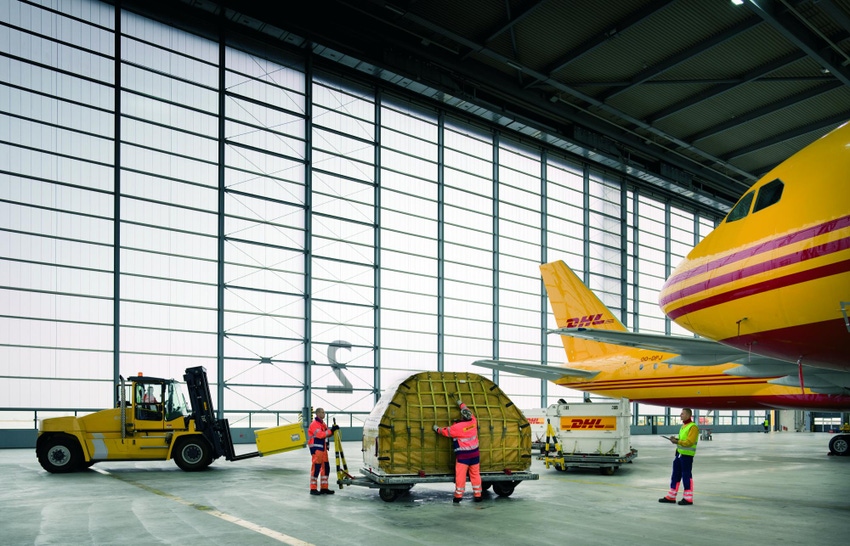Finding better ways to ship: Why European manufacturers need better hubs
June 23, 2017

Pharmaceutical and medical device markets are growing fast. Right now the largest markets are located in the United States (about a 35% share of the world market) followed by the European big five (France, Germany, Italy, Spain, and the United Kingdom) plus China and Japan. If we fast-forward just three years, the picture looks substantially different. By 2020, we are likely to see the epicenter of global markets shifting to China, India, and other developing countries across Asia. This trend sends a clear message to today’s Europe-based manufacturers—you need to find better ways to package and ship pharmaceuticals and medical devices to Asia Pacific.
Analyzing the current challenges
Companies responsible for the packaging and shipment of pharmaceuticals and medical devices face a variety of challenges. Broadly these fall into three categories: challenges of quality assurance, regulatory compliance, and delivery speed.
It’s impossible to overstate the challenge of quality assurance. In getting pharmaceuticals and medical devices from A to B, life sciences and healthcare companies must pay meticulous attention not just to the quality of raw materials and the manufacturing process itself, but also to the end-to-end supply chain. Goods that are sensitive to temperature change and physical shock may leave the factory in perfect condition, but might arrive at final destination only fit to be scrapped.
Also hugely important is the challenge of regulatory compliance, particularly with cross-border transports when goods are subject to multiple and often differing tranches of legislation. Patient lives and brand reputation depend on getting compliance right.
Delivery speed, the third key challenge, is becoming increasingly critical as European manufacturers seek to supply the growing markets of Asia. Achieving an ambitious production target is only a source of celebration when the pharmaceuticals or medical devices also make a lightning-fast journey halfway around the world. Pick-up times can’t be missed. Parcel sorting can’t be bungled. The entire shipment process must be tightly orchestrated, meticulously rehearsed, and competently executed every time.
Investing in multi-million euro facilities
To answer all three of these challenges, logistics service providers are investing not just in their network development and fleet renewal but also in specialist infrastructure.
DHL, for example, has recently made multi-million euro investments in two new hubs certified for life sciences and healthcare product handling and shipment—one at Leipzig airport in Germany and the other at Brussels airport in Belgium.
These hubs will not only serve European-based pharmaceutical companies. A U.S.-based pharma company that wants to send something from its operation in Europe to another location in Europe could utilize the Leipzig hub, as could a U.S.-based pharma company wanting to send something from the United States to Europe.
Best seen at night – the Leipzig sorting center
With a €230 million expansion investment, this high-precision hub in the heart of Europe covers a surface area of two square kilometers and includes a distribution center as well as an aircraft hangar. Every sortable item that arrives at the hub travels from the bay or the apron into the hub to begin minutely detailed and carefully coordinated logistics choreography through DHL’s fully automated sorting facility (the largest in Germany).
Best seen at night—during its operational peak—this facility features four sorting belts running one on top of the other and extending a total length of over 22 kilometers. Each conveyor gear wheel meshes with the next like clockwork to guarantee that processes flow smoothly. The facility includes impressive technical features to accurately, safely, and sustainably handle in excess of 100,000 parcels and documents per hour.
Brand new, ultra-modern sorting center for Brussels
Opening in July 2017, the new Brussels hub more than triples DHL’s sorting capacity. With a total project commitment of €173 million, the company will be able to handle almost 40,000 shipments per hour (up from 12,000), ensuring each item takes the fastest possible path through the facility and onto the airplane. On average it takes just 6.5 minutes to sort a parcel. No matter which way it lies on the conveyor belt, a scanner will read its label. Whatever its shape, size and weight, it will be moved swiftly and smoothly.
Instead of bulk handling, damage is avoided by controlled unloading. A high-performance cross-belt sorting system protects each shipment by placing it in its own tray. And there is an efficient conveyor braking system to slow items down, with gentle transitions and pinpoint accuracy from the sorter to the takeaway lane.
Dealing with stricter air transport regulations
The next process step in shipping high-quality, fully compliant pharmaceuticals and medical devices as rapidly as possible is the task of aircraft loading. This introduces an additional challenge for life sciences and healthcare shippers. Stricter air transport regulations mean that each item must undergo rigorous and auditable security screening.
To deal with this, DHL has invested in the latest real-time tomography technology (RTT). This provides a partially automated screening service—the machine examines each item and, if it detects a potential security threat, it sends a 3D image to a security agent. In addition, DHL can screen employees at its Brussels hub using x-ray technology and metal detectors that are familiar in every international airport these days. Also the company is innovating with a unique airlock concept in its sorting facility—a total of 28 automatic airlocks protect employees, assets, and shipments throughout the journey from landside to airside.
Strengthening trade from Europe to the world
Thanks to these kinds of investment in hubs and technology, Europe-based pharmaceutical and medical device manufacturers are now able to strengthen their trade connections with the rest of the world, especially the growing and potentially lucrative markets of China, India, and beyond.
Andrew Mitchell is Vice President - Healthcare & Life Sciences EMEA at DHL.
About the Author(s)
You May Also Like


